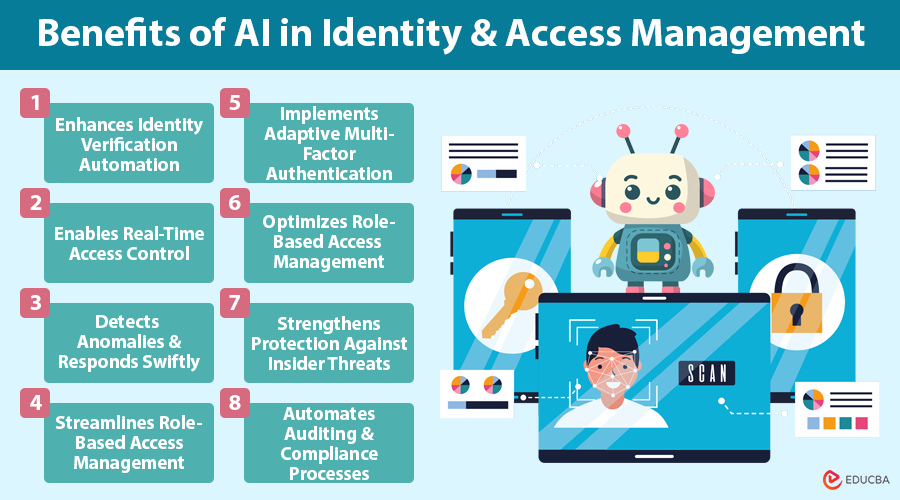Importance of AI in Identity and Access Management
Artificial intelligence is transforming many industries, including Identity and Access Management (IAM). Identity and Access Management (IAM) is a technique that ensures that only the right people can access specific technology resources and data. It controls who can log in, what they can do, and when they can access certain systems. AI in Identity and Access Management is crucial for preventing unauthorized access and protecting sensitive information, especially when global cyber threats are increasing and businesses are working with third-party vendors or suppliers.
AI in Identity and Access Management enhances security measures, optimizes access control, and enables real-time monitoring, making it a powerful tool for managing third-party risk.
What Challenges Do Traditional IAM Systems Face?
Traditional IAM systems face challenges nowadays. As businesses expand, they often work with many third parties, such as suppliers and partners. Each entity requires different access rights to the company’s information and systems, which makes it challenging to manage who can access what.
Third-party suppliers can also pose security risks. Hackers may target these weaker links to gain access to valuable company data. Therefore, businesses must have strong AI in Identity and Access Management to manage these third-party relationships and mitigate potential threats.
However, managing access manually can be slow and prone to errors. This is where AI in Identity and Access Management comes in. AI can help automate and enhance IAM processes, making it easier to manage third-party access and reduce associated risks.
Benefits of AI in Identity and Access Management
Here are the key benefits of AI in Identity and Access Management:
#1. Enhances Identity Verification Automation
AI-driven IAM systems use machine learning to verify user identities more accurately. These systems analyze user behavior, location, and device details to determine if access requests are legitimate.
According to statistics, third-party attacks caused 29% of data breaches in 2023. AI helps lower this risk by quickly and efficiently authenticating users, reducing the chances of breaches through third-party suppliers.
#2. Enables Real-Time Access Control
AI can evaluate the risk level of each access request in real-time, making instant decisions based on various factors. The level of access may change dynamically, depending on parameters like the data being requested, the user’s location, or their past activity. By adapting the access control to current circumstances, AI minimizes the risk of data leaks or breaches.
#3. Detects Anomalies and Responds Swiftly
AI monitors user activity continuously and detects unusual behavior, such as login attempts at odd times or access to restricted information. When such anomalies are detected, AI can alert administrators or lock the user out of the system. This real-time response is critical for managing third-party risks, enabling organizations to react quickly to suspicious activity.
#4. Streamlines Role-Based Access Management
Assigning access rights based on roles can be challenging, especially with a growing number of third-party vendors. AI simplifies this process by assigning roles based on user functions and ensuring that these roles remain appropriate over time. If a user’s behavior or responsibilities change, AI can recommend or automatically adjust their access level.
#5. Implements Adaptive Multi-Factor Authentication
Traditional MFA uses a fixed set of authentication steps. AI makes MFA adaptive, adjusting the authentication requirements based on the level of risk involved in a specific access request.
For example, the system may require additional verification steps if someone logs in from an unusual location. If the request is low-risk, fewer authentication steps might be needed, improving security while enhancing the user experience.
#6. Optimizes Role-Based Access Management
AI analyzes user behavior to identify patterns and suggest organizational role changes. This helps prevent “role creep,” where users accumulate excessive permissions over time. AI ensures that users have the right level of access based on their current responsibilities.
#7. Strengthens Protection Against Insider Threats
AI can monitor for unusual activities, such as accessing sensitive data during off-hours or downloading large amounts of information. When suspicious behavior is detected, AI can limit access and alert security teams, reducing the risk of intentional and unintentional insider threats.
#8. Automates Auditing and Compliance Processes
AI automates access monitoring and auditing, making complying with regulations like GDPR and HIPAA easier. It logs all user activity and generates reports on who accessed what and when. AI also helps identify compliance gaps and suggests fixes, reducing the burden on IT teams and ensuring regulatory compliance.
Final Thoughts
AI in Identity and Access Management simplifies processes, strengthens security, and effectively manages third-party risks. As more companies outsource key tasks to third-party contractors, AI-powered IAM systems will become essential for preventing data leaks and unauthorized access to company systems.
Recommended Articles
We hope this guide on AI in Identity and Access Management has been insightful. Explore these recommended articles for expert advice on securing your organization’s digital assets and managing third-party risks.



